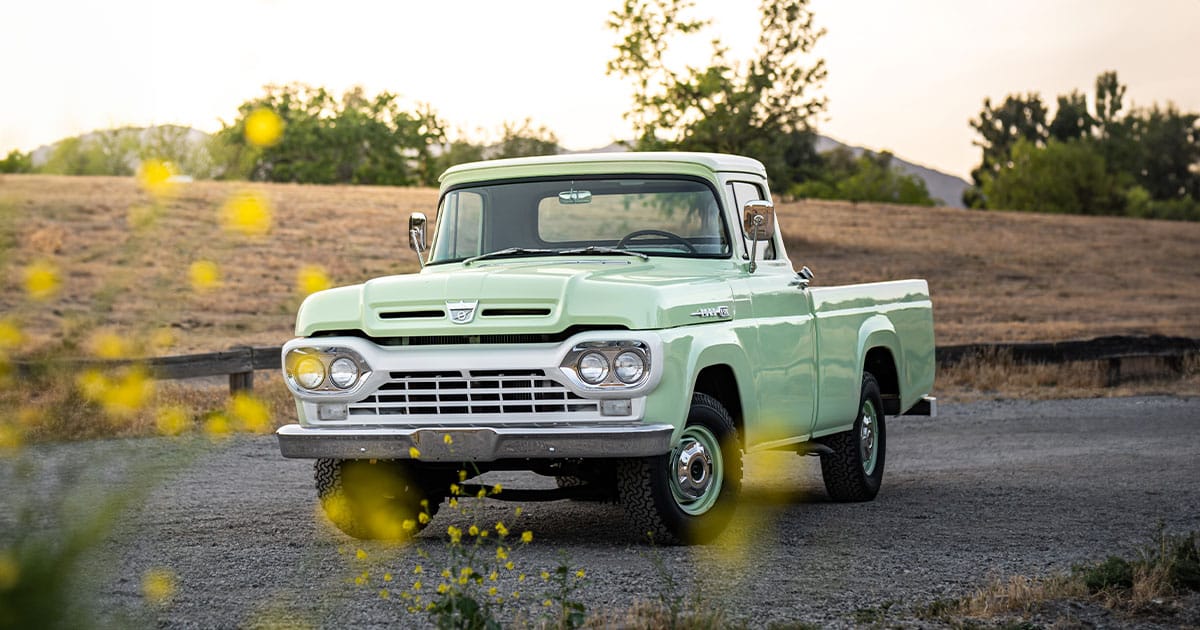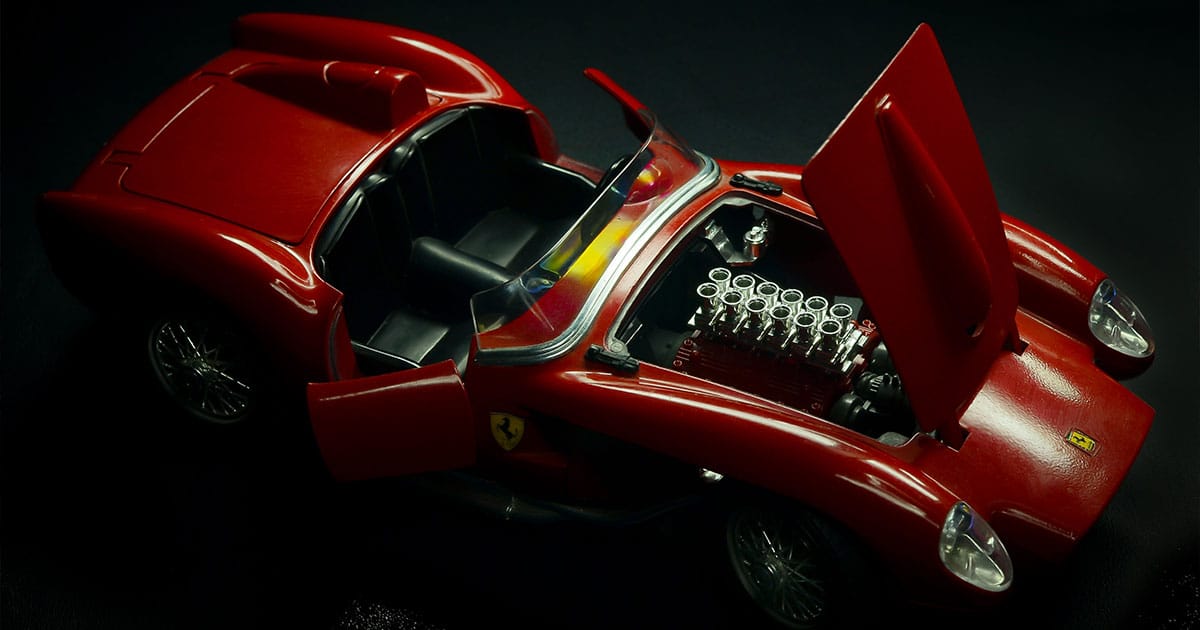You’ve seen it in movies, admired it in car shows, and maybe even dreamed about it – restoring a car to its original glory. It’s more than just a project; it’s a journey of passion and dedication, self-discovery, and the ultimate reward – the satisfaction of restoring a classic car, bringing a piece of automotive history back to life.
Let’s get our hands dirty.

Key Takeaways
- Choose your dream car for restoration wisely, taking into account budget, skill set and parts availability.
- Create a budget and workspace to get the project off to a good start.
- Document & label components during teardown process. Restore engine/transmission, bodywork/paint, suspension/brakes & interior before final assembly for quality control & finishing touches, then take it out for a spin!
Table of Contents
Choosing Your Dream Car for Restoration
Just like you wouldn’t go on a road trip without a map, starting a classic car restoration project requires some upfront planning. Your journey starts with finding your dream car – the soon-to-be masterpiece of your classic car project. While it’s essential to choose a car that resonates with you, make sure it aligns with your budget, skill set, and parts availability.
Because, let’s face it, every classic car has its quirks and peculiarities, and some are more forgiving to restore than others.
Setting Realistic Goals
Restoration is more of a marathon than a sprint, demanding patience, time, and a meticulously planned budget. What’s your skill level? How much can you spend on those hard-to-find body panels or that perfect paint job? When you’re buying a classic car – having a clear picture of what you can handle in terms of work and finances can save you from potential pitfalls down the line and keep your dream car from becoming a garage ornament.
Scouting for the Right Vehicle
Finding the perfect project car is like a treasure hunt. It involves researching online, attending car shows, joining classic car clubs, and maybe even taking a few test drives. But remember, it’s not just about the car’s looks or performance. You need to dig into the car’s history, check for signs of rust or damage, and make sure it comes with the right paperwork.
Because the right car doesn’t just look good on the outside, it feels right on the inside too.

Laying the Groundwork: Pre-Restoration Planning
Before you dive into panel removal or engine tinkering, ensure a strong foundation for your restoration project. This means crafting a detailed budget that covers everything from the vehicle cost to parts and professional services. Additionally, designing a well-organized workspace is key to keeping your restoration project smooth and efficient.
After all, you wouldn’t want to spend hours looking for that one wrench or misplacing a crucial part, would you?
Crafting a Budget Blueprint
Formulating a budget for your classic car restoration project equates to planning a road trip. You wouldn’t embark on a journey without considering fuel costs or accommodation expenses, would you? The same principle applies here. Your budget should account for:
- The cost of the vehicle
- The parts you’ll need
- The tools required
- Any professional services you may need
This way, you can plan your project’s progression and keep track of your expenses, helping you steer clear of any financial roadblocks.
Designing Your Workspace
Your workspace serves as the command center – the place where magic happens. Some of you already know what you’re doing. Some of you don’t. And guess what? That’s the fun part of the restoration process! Hooray YouTube!
Designing an effective workspace means dividing the space into different areas for:
- mechanical work
- electrical work
- body work
- upholstery work
Each area should be equipped with the right tools. This way, you’ll keep things organized and efficient, while also ensuring you have the right environment to bring your classic car back to life.
Organization is easier said than done though, so give yourself some slack if by the end of the night it looks like a tornado has ripped through your garage. It happens to the best of us.
Safety is paramount, so ensure you store chemicals properly, keep the floor clean, and maintain your equipment in top condition.

The Teardown: Dismantling Your Classic Car
Get ready for the teardown phase – it’s time to roll up your sleeves! This is where your classic car restoration project really kicks into gear. You’ll be disassembling your car, documenting, and labeling every part, and stripping the vehicle down to its bare frame.
It’s like solving a complex puzzle, but instead of putting pieces together, you’re taking them apart.
But remember to keep track of all the pieces because soon, you’ll be putting them back together. We can’t state this enough, be EXTRA on this part. Nothing is worse than working on your project car and taking something apart and either not remembering how to put it back together or not being able to find something you just knew you left on the table.
Remember you want things to be in better shape than when you found them.
Document and Label Everything
The art of disassembling a classic car revolves around meticulous documentation and labeling, which are fundamental to a successful teardown. It’s like creating a map for your future self, guiding you through the reassembly process. Here are some steps to follow:
- Take photos of each part before removing it.
- Label each part with a clear and descriptive tag.
- Note where each component came from and how it fits into the bigger picture.
By following these steps, you can ensure a smooth reassembly process and avoid any confusion or mistakes.
This will save you hours of guesswork later and ensure that every component finds its way back home.
Stripping the Vehicle
Just as peeling an onion involves stripping away layers to reach the core, stripping a vehicle down to its bare frame follows the same principle. This means taking off all components, from the engine and transmission to the front and rear suspensions, including the need to remove rear axle. It’s a demanding process, but going through the entire process also provides a chance to inspect each component closely, assess its condition, and decide whether it needs repair or replacement.
Reviving the Heart: Engine and Transmission Work
Now we approach the core of your classic car restoration project – the resurrection of the engine and transmission. It’s about inspecting and overhauling the engine, restoring the transmission, and breathing new life into the very heart of your car. You’ll be delving into the mechanics, ticking off a checklist of crucial tasks, and ensuring that your classic car’s heart beats strong and steady.
Engine Inspection and Overhaul
As the heart of your classic car, the engine warrants your undivided attention. Inspecting the engine involves looking for signs of wear and damage, testing the performance, and deciding what needs to be repaired or replaced.
You’ll be getting up close and personal with your car’s heart, ensuring that it’s in prime shape to power your classic ride.
Transmission and Drive Train Restoration
Serving as the veins of your vehicle, the transmission and drive train distribute power from the engine to the wheels. Restoring them involves replacing worn or damaged components, ensuring that the transmission shifts smoothly, and the drive train delivers power efficiently. It’s all about ensuring that the heart’s power is delivered where it’s needed, with the help of the engine gearbox, ensuring a smooth and enjoyable ride.

Body Work and Paint Perfection
The bodywork and paint serve as the skin and complexion of your classic car, setting the first impression. This stage involves:
- Finding and repairing rust and damage
- Achieving a show-quality finish that turns heads
- Meticulous attention to detail
- Patience
- An artisan’s touch
Because beauty, as they say, is skin deep. And saying that might make you feel better when you see how much it costs to paint your vehicle. I can see why you might be tempted to do it yourself but be warned. It’s not as easy as it looks.
Finding Rust and Repairing Damage
Rust operates as a silent adversary, gradually eroding the beauty of your classic car. Locating and repairing rust and damage is a crucial step in restoring your car’s bodywork. It’s about taking a close look, dealing with the rust head-on, and repairing the damage to restore your car’s body to its former glory.
Achieving a Show-Quality Finish
Attaining a show-quality finish can be likened to placing the cherry on top of your classic car restoration project. It’s about preparing the surface, applying primer, and painting with precision and skill. You’ll be adding the final touches that make your car stand out, turning it into a dazzling beauty with a body freshly painted that’s ready for the road and the show.
Rejuvenating the Ride: Suspension and Brakes
The rejuvenation phase focuses on ensuring your classic car’s performance matches its appearance. You’ll be overhauling the suspension and brakes, ensuring they function flawlessly for a smooth, comfortable ride.
It’s about restoring the balance between power and control, giving you the confidence to enjoy your classic ride to the fullest.
Suspension System Overhaul
A classic car’s suspension system is like its legs – it absorbs shocks, keeps the car balanced, and ensures a smooth ride. We love these shocks from TracTive for any vehicle that’s wanting to go off-road!
Overhauling the suspension involves replacing worn or damaged components, tuning the system for optimum performance, and ensuring your car handles beautifully on the road.
Renewing the Brake System
The brake system acts as the lifeline of your classic car, safeguarding your road safety. Renewing the brake system involves checking all components for proper function, replacing worn or damaged parts, and ensuring your classic car stops as smoothly as it runs. Because safety, as they say, is no accident.
Refurbishing the Interior: Upholstery and Instruments
Refurbishing the interior trim breathes a new heart and soul into your classic car. It’s about restoring seats and carpets, breathing new life into the dashboard, and making sure every dial, button, and switch works perfectly.
Because a classic car is more than just an object – it’s a trip down memory lane, a piece of history you can touch, feel, and even drive. These most classic cars represent an era gone by, yet they continue to captivate enthusiasts and collectors alike.
Restoring Seats and Carpets
The process of restoring seats and carpets can be equated to reupholstering your classic car’s living room. It’s about repairing or replacing old upholstery, giving your seats a fresh, comfortable feel, and ensuring the carpets are clean and well-fitted.
Because the journey is as important as the destination.
Instrumentation and Dash Restoration
Consider the dashboard as the command center of your classic car. Restoring it involves:
- Checking all gauges and controls for proper function
- Repairing or replacing any faulty components
- Ensuring everything looks and works as it did when the car first rolled off the assembly line.
Because every journey deserves a reliable compass.
Wiring and Electrical Systems
The wiring and electrical systems function as your classic car’s nervous system, harmoniously interconnecting all parts. Restoring them involves careful rewiring, checking all electrical components, and ensuring they all function correctly. Because a well-connected car is a well-functioning car.
Rewiring Techniques
Appropriate rewiring techniques are crucial for establishing a safe and dependable electrical system in your classic car. It’s like giving your car a new nervous system, making sure every signal gets where it’s supposed to go.
And remember, a well-wired car is a well-connected car.
Electrical Components Check
Inspecting all electrical components, such as lights, switches, and motors, equates to providing your car with a comprehensive health check-up. It ensures that every part is in proper working order and ready to perform its function.
And remember, a well-checked car is a well-maintained car.
Final Assembly and Accent Pieces
Final assembly and accent pieces represent the last piece of your restoration puzzle. It’s about putting the car back together, checking everything fits as it should, and adding the finishing touches that make your classic car truly shine.
Because every masterpiece deserves a final flourish.
Putting It All Together
Reassembling the car mirrors the process of piecing together a puzzle. You start with the first piece you took out and then, piece by piece, everything finds its rightful place. And with every part that you install, you can see your classic car coming back to life with the help of replacement parts.
Quality Control and Finishing Touches
Quality control and the addition of finishing touches serve as the final inspection of your masterpiece. You make sure every part is in place, every function works as it should, and every surface shines as it was meant to.
Adding the finishing touches, from chrome trims to decals, is what turns your restored classic car into a true show-stopper.

The Reward: Test Drive and Enjoyment
Finally, the moment you’ve been anticipating has arrived – the test drive. This is the reward for all your hard work, the moment your beautifully restored classic car hits the road for the first time. It’s time to sit back, feel the engine’s purr, and enjoy the ride.
Because the journey of the restoration process, like the journey of life, is all about enjoying the ride.
Summary
We’ve broken this down, step by step, showing you the process of classic car restoration, from choosing your dream car, setting realistic goals, and planning the project, to the teardown, engine and transmission work, bodywork, interior refurbishing, and final assembly.
We’ve seen how every step, every part, and every decision plays a crucial role in bringing a piece of automotive history back to life. And most importantly, we’ve learned that restoring a classic car is more than just a project – it’s a labor of love, a journey of self-discovery, and the ultimate payoff is the satisfaction of bringing a classic car back to life. Send your photos to us at getvintagevehicles.com.
Frequently Asked Questions
Is it worth restoring cars?
Restoring cars can be a good investment if you plan to sell them. However, don’t expect to make your money back if you’re keeping the car.
Is restoring a car expensive?
Restoring a car can be expensive, with parts alone costing upwards of $10,000, and labor costs being as high as $200 per hour. A quality paint job could cost several thousand dollars, and an overall restoration by one shop can range from $40,000 to $60,000, making it an expensive endeavor.
Make sure you get good insurance!
What’s the first thing to do when restoring a car?
Start by stripping your car – this includes taking out the wiring, engine, gearbox, external panels, windows and headlights.
How hard is restoring a car?
Restoring a car is no easy task; it’s a lot of hard work and time-consuming. Mistakes will be made, head banging and cutting hands inevitable, and sometimes you just won’t make any progress until you find a way to overcome the obstacles.
What are the main things to consider when choosing a classic car for restoration?
When selecting a classic car for restoration, consider your budget, the availability of parts, the car’s condition and your own personal preferences. Pick something you’re passionate about as it will require a lot of time and effort.



